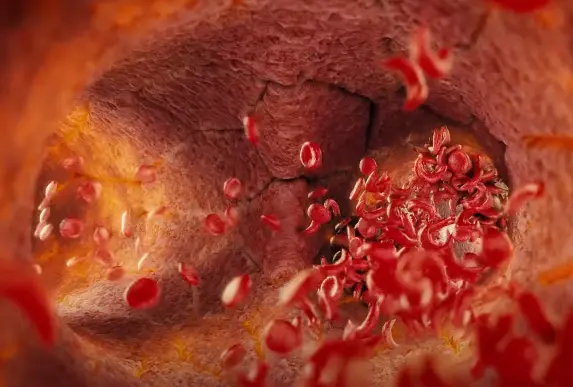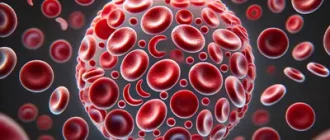Vascular compression syndromes are a group of conditions that occur when a person’s blood vessels are under abnormal pressure, limiting the size of the blood vessel and the amount of blood that flows through it. This lack of blood flow can lead to various symptoms, ranging from weakness to extreme pain, and the manifestation differs from person to person.
Compression syndromes can happen in different parts of the body, and they are named based on their location and the affected blood vessel. While some compressions may be asymptomatic and not affect a person’s day-to-day life, others can cause significant pain and debilitation. It is important to note that symptoms can vary even if the compression occurs in the same place.
The sheer variety of syndromes and their associated symptoms often pose challenges in diagnosis, leading to misdiagnosis in many cases, according to iythealth.com. This misdiagnosis can result in years of pain, frustration, and mental anguish for patients.
Causes of Compression of Blood Vessels
Identifying the underlying causes of compression of blood vessels is crucial for effective treatment. Here are some common causes:
- Structural Abnormalities: Anatomical abnormalities, such as an extra rib or narrow blood vessel openings, can compress nearby blood vessels, leading to decreased blood flow.
- Tumors: Both malignant (cancerous) and benign tumors can exert pressure on blood vessels, either by directly compressing them or by promoting abnormal blood vessel growth.
- Inflammation: Conditions like arteritis, in which blood vessels become inflamed, can lead to vessel narrowing and compression.
- Enlarged Organs: Certain organs in the body, such as an enlarged liver or spleen, can compress nearby blood vessels due to their increased size.
- Trauma or Injury: Physical trauma, such as fractures or dislocations, can cause blood vessel compression by displacing surrounding tissues or bones.
- Muscle or Ligament Hypertrophy: Hypertrophy, an abnormal increase in muscle or ligament size, can cause compression of blood vessels in the affected area.
- Congenital Abnormalities: Some individuals are born with structural abnormalities that predispose them to vascular compression syndromes.
- Hormonal Changes: Hormonal imbalances, such as those associated with pregnancy or hormonal disorders, can lead to increased tissue growth and subsequent blood vessel compression.
Signs of Compression of Blood Vessels You Shouldn’t Ignore
When your blood vessels come under pressure or compression, it can lead to various health issues and discomfort. Recognizing the signs of compressed blood vessels is crucial for seeking timely medical attention. Here are 10 signs you should never ignore:
- Numbness and Tingling: If you experience persistent numbness or tingling sensations, especially in your hands, feet, or extremities, it could indicate compromised blood flow. This sign may be accompanied by a feeling of pins and needles or a loss of sensation.
- Pale or Blue Skin: Compression of blood vessels can restrict oxygen and nutrient delivery to tissues, resulting in pale or bluish discoloration of the skin. Pay close attention to any significant changes in your skin color, especially in the affected areas.
- Swelling: When blood vessels become compressed, they can impede proper fluid drainage from tissues, causing swelling or edema. Look out for unexplained swelling in your limbs or other body parts, as it might indicate compromised blood circulation.
- Cold Sensation: Reduced blood flow due to vessel compression can lead to a persistent feeling of coldness in the affected areas. If you notice that your hands, feet, or extremities are frequently cold, it might be a warning sign.
- Pain or Discomfort: Compression of blood vessels can cause pain, ranging from a dull ache to sharp, shooting pains. This discomfort might occur randomly or worsen with certain movements or activities.
- Weak Pulse: Feeling a weak or erratic pulse can be an indication of restricted blood flow. Pay attention to changes in the strength and regularity of your pulse, particularly in the affected areas.
- Slow Wound Healing: When blood vessel compression inhibits proper circulation, it can slow down the healing process of wounds or injuries. If you notice that your wounds take an unusually long time to heal, consult a healthcare professional.
- Hair Loss: A lack of sufficient blood supply to the scalp due to compressed blood vessels can result in hair loss. If you experience sudden and widespread hair thinning or bald patches, it’s worth discussing with your doctor.
- Fatigue and Weakness: Reduced blood flow to muscles can cause fatigue and weakness, making everyday activities more challenging. If you frequently feel tired or weak, especially in your limbs, it could be an indication of compression in your blood vessels.
- Headaches: Compression of blood vessels in the head or neck region may lead to recurring headaches or migraines. If you have frequent, unexplained headaches, it’s essential to investigate the underlying cause thoroughly.
Treatment Options for Compression of Blood Vessels
There are several treatment options available to alleviate this condition and restore proper blood circulation. This list explores six effective treatment methods for compression of blood vessels to help you understand the available options.
- Medication:
Medications can be prescribed to manage the underlying cause of blood vessel compression. Anti-inflammatory drugs may be used to reduce swelling around compressed vessels, while blood thinners can help prevent blood clots. Muscle relaxants may also be prescribed to relieve spasms that contribute to blood vessel compression. - Physical Therapy:
Physical therapy can help alleviate symptoms of blood vessel compression by strengthening the affected muscles and improving overall body function. Techniques such as stretching exercises, ultrasound therapy, and massage can improve blood circulation and relieve pressure on the compressed vessels. A qualified physical therapist can create an individualized treatment plan tailored to your specific condition. - Surgical Intervention:
In severe cases, surgical intervention may be necessary to relieve the compression. The type of surgery will depend on the location and severity of the compression. Procedures like angioplasty, stenting, or bypass surgery may be performed to open up or bypass the compressed blood vessels, restoring normal blood flow. Surgical intervention is usually considered when conservative treatments have failed to provide relief. - Lifestyle Modifications:
Certain lifestyle changes can effectively reduce blood vessel compression. Regular exercise, weight management, and adopting a healthy diet can help prevent conditions that contribute to compression, such as obesity and atherosclerosis. Quitting smoking and managing stress levels can also improve blood vessel health and reduce the risk of compression. - Compression Garments:
In some cases, wearing compression garments, such as stockings or sleeves, can help alleviate symptoms of blood vessel compression. These garments apply gentle pressure to the affected area, improving blood flow and reducing swelling. Compression garments are commonly used to treat conditions like deep vein thrombosis and lymphedema but can also provide relief for blood vessel compression. - Nerve Blocks:
Nerve blocks involve injecting local anesthetics or medications near the compressed nerves to relieve pain and reduce inflammation. This treatment option can be effective in providing short-term relief from blood vessel compression in specific areas, such as the spine or joints. Nerve blocks are typically administered by qualified healthcare professionals, such as pain management specialists or anesthesiologists.
Conclusion
It is important to consult with a medical professional if you suspect that you may be experiencing symptoms related to the compression of blood vessels, says R.Mammadli. Early diagnosis and appropriate treatment can help alleviate pain, restore blood flow, and improve overall quality of life for those affected by vascular compression syndromes.
About the Author
Reyus Mammadli is the author of this health blog since 2008. With a background in medical and biotechnical devices, he has over 15 years of experience working with medical literature and expert guidelines from WHO, CDC, Mayo Clinic, and others. His goal is to present clear, accurate health information for everyday readers — not as a substitute for medical advice.







